Contemporary Age (1808-1977)
The Contemporary Age came to Larraga with the War of Independence (1808-1813). With the Carlist wars (1833-1840, 1872-1876), Larraga began one of its most dense and important historical stages to be a liberal bastion of enormous importance that passed the most important generals of the time (Fernandez de Cordoba, Espartero , Martínez Campos, Concha, Primo de Rivera, Echagüe, Moriones, etc.). In this way, the castle was fortified again along with other complementary buildings, although at the beginning of the twentieth century it would eventually disappear. A defensive wall or wall was built throughout the perimeter of the town and from two to five February 1875, King Alfonso XII visited Larraga discontinuously. However, as Larraga had a great importance on the liberal side, he also had it in the Carlist, since from here came several of the most influential people of the moment: General Garcia, Fray Ignacio de Larraga, General Mendiry, Colonel García or the vice president of the Manuel Larraya Provincial Council (Restoration). In addition, in November 1834, the infant and suitor Carlos María Isidro de Borbón visited Larraga along with Zumalacárregui and Iturralde, at the head of seven battalions and six squadrons of cavalry. Shortly after, in 1835, Zumalacárregui suffered a defeat in the bridge of Larraga.
In 1904 the nuns of San Vicente de Paul took charge of the old Hospital of Larraga, running it until 1995 together with the teaching. In 1918, the first water was brought to the town center and the Town Hall distributed from 1,500 to 2,000 stolen communal land before the peasant demand. Previously, electricity and light had arrived. At the moment, one of the issues that conditioned political and social life was the demarcation of the communal, especially during the Second Republic. Shortly afterwards the house-barracks of the Civil Guard of Larraga moved to Artajona when building a new barracks there. After the tragic civil war of 1936, with a high number of victims in the rear, Larraga gradually recovered, and in this way the creation of several cooperative farming societies continued. Industrialization took place in the sixties, and this, together with the agricultural technification, led many workers to move to the factories of the Middle Zone and Pamplona in the 1970s and 1980s. Although this would not prevent the notorious development of vine nurseries that would later make Larraga one of the largest producers at the national level.







